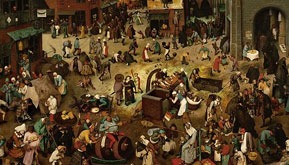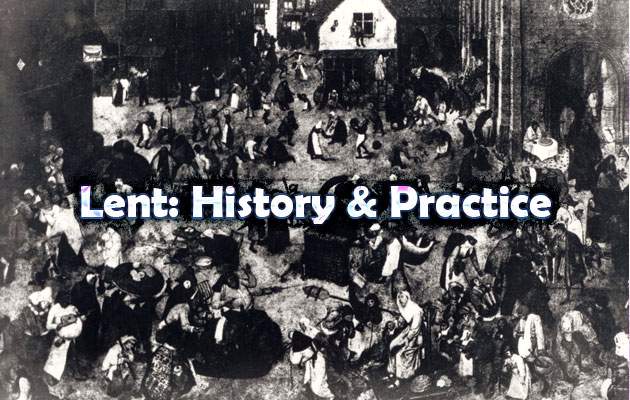Lent, or Great Lent, is a commonly observed Christian time of personal introspection and penitence. It has been observed by Christians in one form or another for thousands of years. Some say since the time of Jesus on earth, which is possible, but the first recorded instance of a 40-day Lenten season is in 325AD, from the council of Nicaea (you may recognize this as the source of the Nicene Creed).
The word lent comes from the Germanic term for Spring, and it is a sort of “spring cleaning,” in a way. Originally, though, the time period was called quadragesima (“fortieth day” – counting back from Easter or Pascha).
It is generally understood that Lent, as a time of fasting, began as only a few days (likely between one and three; some sources indicate 40 hours), as recorded by Irenaus of Lyons in the 2nd century. Ash Wednesday has always been a fast day, regardless of how many other days were included, if any. It is believed that the time period lengthened gradually over a number of years, finally settling into the 40-46 days sometime in the fourth century.

While it may seem strange to ignore Sundays during a fast period, it makes sense when one understands that Sundays are excluded from restrictions, and therefore not numbered. This arrangement was set up by Gregory in the sixth century, because he wanted the fast days to equal 40, with Sundays being feast days.
40 is a significant number in the Bible for preparation. In the Levitical law, there were many 40-day cleansing rituals. Moses spent 40 days and 40 nights with the Lord when he was given the Ten Commandments. The Israelites spent 40 years in the wilderness to prepare them to enter the Promised Land. Elijah spent 40 days and 40 nights traveling to the mountain of the Lord (Mount Sinai). Jesus fasted and prayed for 40 days before beginning His earthly ministry.

The reason for Lent is much more important than just not eating or not eating certain foods, however. Unless the believer uses the time as it is intended, there is no point in observing it at all. The intention is to prepare for the renewal time of Easter through prayer, sacrifice, penance, and good works. In early centuries (beginning around the middle of the fourth century), Easter was a time when baptism was performed, so Lent was a time of preparation for that ceremony and celebration.

While the term Lent is not found in the Bible, nor is the exact practice, the concept is based on Biblical principles. The primary facets of Lent (reflection on the death of Christ, along with prayer and repentance, fasting, and almsgiving) are definitely reflected in the Bible, even though the time period set forth is not. While we ought to do these things anyway, it can help to have a time set apart to ensure the accomplishment of them.
While Lent is observed through restriction and solemnity, it is still meant to be a season of joy. The first Mass in Lent includes the following:
Each year you give us this joyful season when we prepare to celebrate the Paschal mystery with mind and heart renewed. You give us a spirit of loving reverence for You, our Father, and of willing service to our neighbor. As we recall the great events that gave us a new life in Christ, You bring to perfection within us the image of Your Son.
Giving up something – whatever it may be – for Lent ought not to be viewed as a grievous situation, but as something one does out of Love for God and our fellow-man, and therefore a thing of joy. The culmination of the Lenten fast – the Holy Week – is definitely a time of joy, as believers remember the death and burial and – most importantly – the resurrection of the Saviour.
It is not always food that is given up for Lent. While fasting from meat is nearly always a part of it (if not fasting everything), the thing or things are given up for Lent are often other desires, such as sugar, computer time, sex, caffeine, eating at restaurants, smoking, swearing, television, etc. The time and money that would normally be spent on indulging these earthly desires are meant to be used to bless the poor. The restraint needed to refrain from indulging in these things is a good practice in self-control.
Along with refraining from these things, it is expected to do some things: pray, give money and time to those who need it, read and study Scripture, read and study spiritual books, etc.
Regardless of what sort of fasting is chosen, the goal is to finish with stronger faith, a closer relationship with God, and practice in spiritual discipline.

